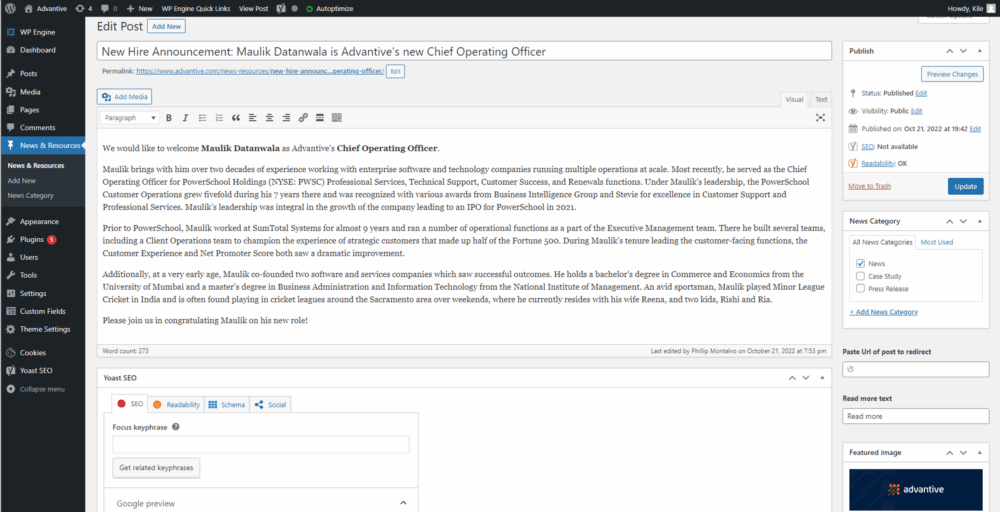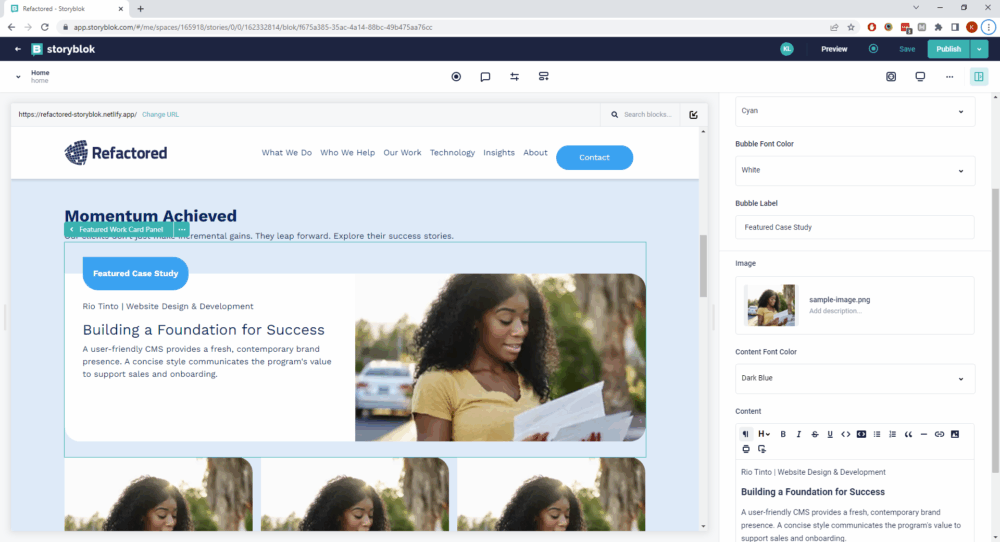Content is the linchpin that connects you to your customers. In a world where people consume content on multiple devices and in many formats, ensuring a great experience is critical.
A headless content management system (CMS) can be a powerful solution—not only for your users, but also for marketers and developers supporting content creation and development.
By separating the back end from the front end, headless CMS can transform the way users experience your content—and the way companies approach content development.
Read on to learn why a headless CMS might be a smart choice for organizations aiming to streamline content delivery across multiple platforms.
The most important thing to know about a headless CMS is that it separates the creation and storage of content (back end) from the presentation and delivery (front end). Known as “decoupled” architecture, this approach can offer superior flexibility, scalability, site speed, and security.
Unlike a traditional CMS, where content is tied to a pre-set theme, a headless CMS delivers it through Advanced Programming Interfaces (APIs).
Key takeaway: A headless CMS stores and manages your content, while a presentation tool (website or mobile app) presents the content.
This structure may make it easier to manage, deliver, and repurpose your content to match the omnichannel environment your customers use.
To support the best possible delivery of content across a variety of formats, the headless approach involves creating modular content components that can be deployed to any type of front end. For example, suppose you’re creating a web page that includes:
With a traditional CMS, you might break out a couple of these items in separate entry fields, but more likely, you’d just lay them out all together in a single content object using a What You See Is What You Get (WYSIWYG) editor.

A headless system, such as Storyblok or similar platforms, breaks these components down even further and doesn’t mix content, layout, and design—keeping the end display more flexible:
The CMS enables you to specify which of these pieces should link with others by adding tags and taxonomy notations to each item.

With this information, developers can use programmatic APIs to pull the content into a variety of front ends. The results can be more adaptable and reusable than a big block of content designed for a static webpage shoehorned into other formats.
A traditional, monolithic CMS may feel limiting depending on project goals or complexity. Its architecture can sometimes create workflow bottlenecks or reduce flexibility.
Common challenges include:

As a marketer, you need to get campaigns off the ground fast. A headless CMS’ centralized content repository can make it easier to create content once and publish it across multiple channels—often with less reliance on development teams.
If you choose a headless CMS with a visual editor, like Storyblok or other similar platforms, your content creators can preview website changes in real time.
A headless approach can also offer advantages in content strategy. Thinking about content in modular, reusable chunks helps tighten messaging and lead users toward a clear outcome.
It encourages deeper content evaluation:
This more granular approach can support improved taxonomy, tagging, and reuse—benefiting both users and marketers.
Because a headless CMS separates the back end from the front end, developers can work with the technologies they prefer. In contrast, traditional CMS platforms may restrict your programming language or integration options.
A headless CMS can empower your team to adopt best-of-breed tools that align with your business goals—whether that’s marketing automation, ecommerce, or another integration.
Many developers work in agile environments. A headless CMS can fit well with these workflows, helping marketing and development teams work in sync.
We can help. BizStream brings deep experience across multiple CMS platforms—from traditional solutions like Kentico to modern headless CMSs like Storyblok, Kontent.ai, and Payload. Whether you’re working with an existing platform or exploring new options, we help you assess your needs and recommend the best-fit approach for your business, team, and tech stack.
By working with us, you’ll get:
This post was written by Kile Lindgren, a Solution Architect at BizStream and an official Storyblok Ambassador. Learn what his Ambassador status means for our clients.

Stay up to date on what BizStream is doing and keep in the loop on the latest in marketing & technology.